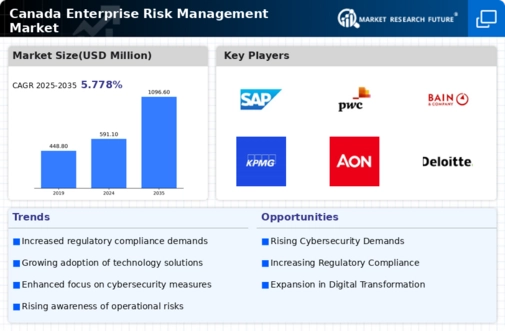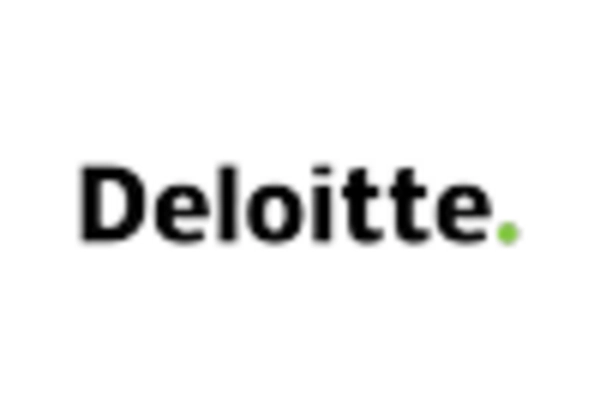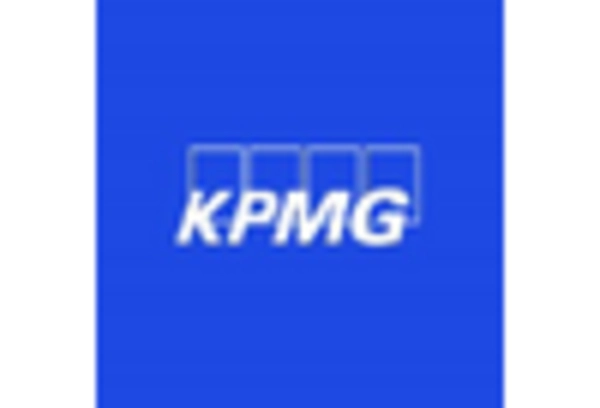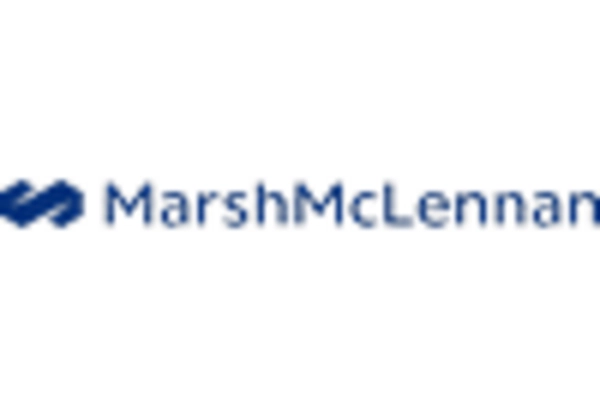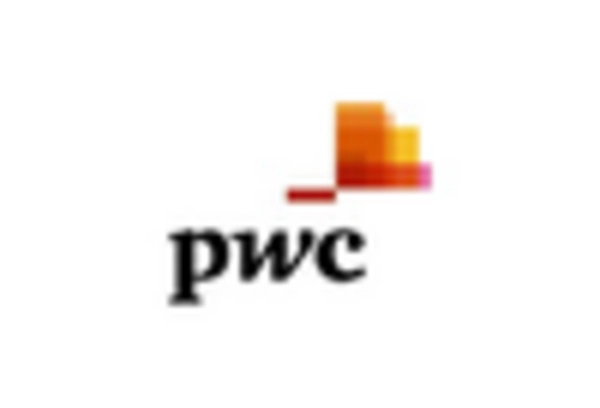Evolving Regulatory Landscape
The enterprise risk-management market in Canada is being shaped by an evolving regulatory landscape that mandates stricter compliance measures. Regulatory bodies are increasingly requiring organizations to adopt robust risk management frameworks to safeguard against potential liabilities. This shift is evident in the financial sector, where compliance costs have risen by approximately 15% in recent years. As organizations strive to meet these regulatory demands, the enterprise risk-management market is likely to expand, with a focus on developing solutions that facilitate compliance and risk mitigation. This trend underscores the importance of integrating regulatory considerations into risk management practices.
Increased Focus on Operational Resilience
In the current landscape, Canadian organizations are placing a heightened emphasis on operational resilience, which is significantly influencing the enterprise risk-management market. The ability to withstand and recover from disruptions is becoming paramount, prompting businesses to invest in comprehensive risk management strategies. This trend is reflected in a recent survey indicating that over 70% of Canadian firms are prioritizing resilience planning. As a result, The enterprise risk-management market is evolving to incorporate tools and frameworks that enhance organizational resilience. This ensures that companies can navigate uncertainties effectively while maintaining operational continuity..
Rising Cyber Threats and Security Concerns
The enterprise risk-management market in Canada is significantly influenced by the rising prevalence of cyber threats and security concerns. As organizations face an increasing number of cyberattacks, the need for comprehensive risk management strategies has become more critical. Recent statistics reveal that cyber incidents have surged by over 30% in the past year, prompting businesses to prioritize cybersecurity within their risk management frameworks. Consequently, The enterprise risk-management market is adapting to address these challenges. It focuses on developing solutions that enhance cybersecurity measures and protect organizational assets from potential breaches..
Growing Demand for Risk Assessment Solutions
The enterprise risk-management market in Canada is experiencing a notable increase in demand for risk assessment solutions. Organizations are recognizing the necessity of identifying potential risks to their operations, which has led to a surge in the adoption of risk assessment tools. According to recent data, the market for risk assessment solutions is projected to grow at a CAGR of approximately 12% over the next five years. This growth is driven by the need for businesses to enhance their decision-making processes and mitigate potential threats. As companies strive to maintain competitive advantages, the enterprise risk-management market is likely to see a corresponding rise in the development and implementation of sophisticated risk assessment methodologies.
Integration of Data Analytics in Risk Management
The integration of data analytics into risk management practices is emerging as a pivotal driver for the enterprise risk-management market in Canada. Organizations are leveraging advanced analytics to gain insights into potential risks and enhance their decision-making capabilities. This trend is supported by findings that indicate companies utilizing data analytics in risk management report a 20% improvement in risk identification and mitigation. As businesses increasingly recognize the value of data-driven insights, the enterprise risk-management market is likely to witness a surge in demand for analytics-based solutions that facilitate proactive risk management.


